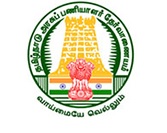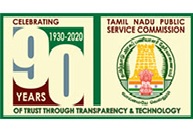TNPSC Marine Biology Exam Syllabus : Tamil Nadu Public Service Commission
Organisation : Tamil Nadu Public Service Commission (TNPSC)
Exam Name : TNPSC Marine Biology Examination
Standard : PG Degree Standard
Subject Code : 294
Announcement : TNPSC Marine Biology Exam Syllabus
Website : https://www.tnpsc.gov.in/English/new_syllabus.html
TNPSC Marine Biology Syllabus
TNPSC Marine Biology Exam Syllabus are given below,
Related / Similar Syllabus : TNPSC M.D.Microbiology Exam Syllabus

UNIT – I: Taxonomy And Biology Of Marine Organisms
Classification of marine fin and shell fishes – Important fishes of the world – Their identification; sea turtle and mammals – Classification and diagnostic characters. Food and feeding; age and growth and reproductive biology; fish eggs and larvae and developmental biology. Functional morphology of digestive, respiratory, circulatory, excretory and reproductive systems in fin and shellfish. Principles of immunology and Endocrine system.
UNIT – II: Marine Capture Fishery And Stock Assessment
Classification, definitions of fishery zones and fishery resources – Neritic, benthic, demersal, pelagic &deep sea systems; world and Indian fishery resources; potential marine fishery resources of Indian EEZ. Population dynamics; mortality – Natality – theory of fishing – Catch Per Unit Effort (CPUE) – Maximum Sustainable Yield (MSY) – Maximum Economic Yield (MEY) – Fishery Maximum Economic Yield (FMEY) – Overfishing.
UNIT – III: Meteorology And Geography
Structure of atmosphere; weather and climate – Definition and concepts, characteristics and laws of black body radiation; solar radiations, its characteristics; vertical and horizontal heat balances; air temperature – Horizontal distribution; explanation of DALR, SALR and isotherms; general circulation – Monsoon characteristics, water in atmosphere, condensation; clouds and its classification; weather systems – FAO classification of fishery zones of world oceans.
UNIT – IV: Oceanography (Physical, Chemical And Biological)
Major divisions of marine environment; Physical properties of seawater -Thermal properties of seawater; concepts of sonar, channel and shadow zone; heat budget; T-S diagram; properties of Waves: types of waves and properties of ocean waves; Tides: Origin of the tides;Wind and Ocean circulation – Types of currents. Chemical properties of seawater: Concept of chlorinity and salinity of seawater; gases, organic and particulate matter. Origin, distribution of nutrients cycle and their significance. Upwelling; manganese nodules. Primary and Secondary productivity of the coastal environment; Phytoplankton and Zooplankton: Classification, distribution, their role in coastal ecosystems and adaptations. Primary production and factors affecting primary production. Seaweed, seagrass, mangrove and coral ecosystems; Fouling and boring organisms.
UNIT – V: Marine Pollution And Coastal Zone Management
Types of pollution – Organic (domestic, municipal and industrial), heavy metals, radioactive, pesticide, oil and thermal; Treatment methods (primary, secondary and tertiary); Pollution indicators; role of pollution control board and prevention of pollution. Goals and purposes of coastal zone management; methods of coastal zone management and policies involved; Coastal Regulation Zone Act, Integrated Coastal Zone Management; International treaties and conventions.
UNIT – VI: Culture Of Commercially Important Marine Fish And Shell Fishes
Present status of aquaculture in the world, in general and India, in particular; important cultivable species of fin and shell fishes; criteria for species selection; site selection for culture systems; components of aquaculture farms – Water intake and filtration systems; preparation of ponds – Water culture – Water quality parameters – Stocking – Feeding – Aquaculture systems – Land-based and open sea farming. Artificial feed formulation. Pond management; disease management; harvest and post-harvest technology. Marine Ornamental fishes – Setting up of aquarium – maintenance – Export potential and marketing.
UNIT – VII: Hatchery Seed Production Technology
Hatchery seed production of commercially important fin and shell fishes; collection and transport of seeds from natural environment; criteria for site selection and construction of hatcheries – Different components of hatcheries; operation and management; induced breeding and broodstock maintenance; cryopreservation; larval rearing and culture of live feed – Chlorella, nanoflagellates, Artemia, Rotifers and Daphnia; nursery rearing.

Download Syllabus
TNPSC Marine Biology Syllabus Link:
http://www.syllabus.gen.in/uploads/pdf2022/2929-syllabus.pdf